Maple Syrup Season Is Here
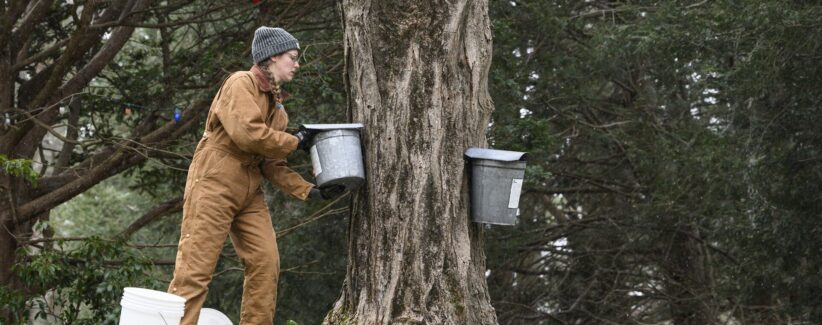
As winter marches on, the sweet scent of maple fills the air at Gaining Ground. The maple sugaring program is in full swing. On any given day, maple sap is being boiled down into syrup.
Maple syrup is such a treat to offer in our winter food distribution. Real maple syrup is often cost-prohibitive for those on a tight budget, yet it is a source of essential minerals. Natural maple syrup has an abundant supply of manganese, zinc, calcium, and potassium. We’re grateful to be able to provide it.
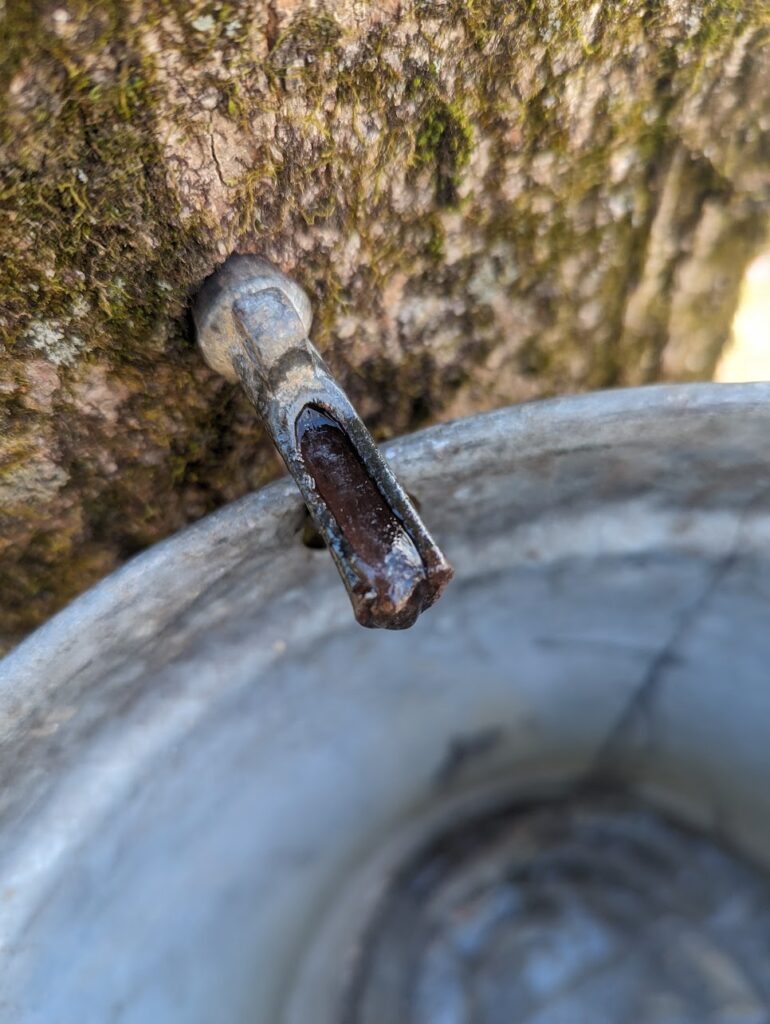
An Indigenous peoples’ tradition, maple sap is produced when starches stored in a tree’s roots break down into sugars and diffuse upwards through the tree. It’s most concentrated in the newest layer of a tree’s growth, just inside the bark. The sap flows when the nights are below freezing but the days are warmer—a sign of the start of the transition to spring.
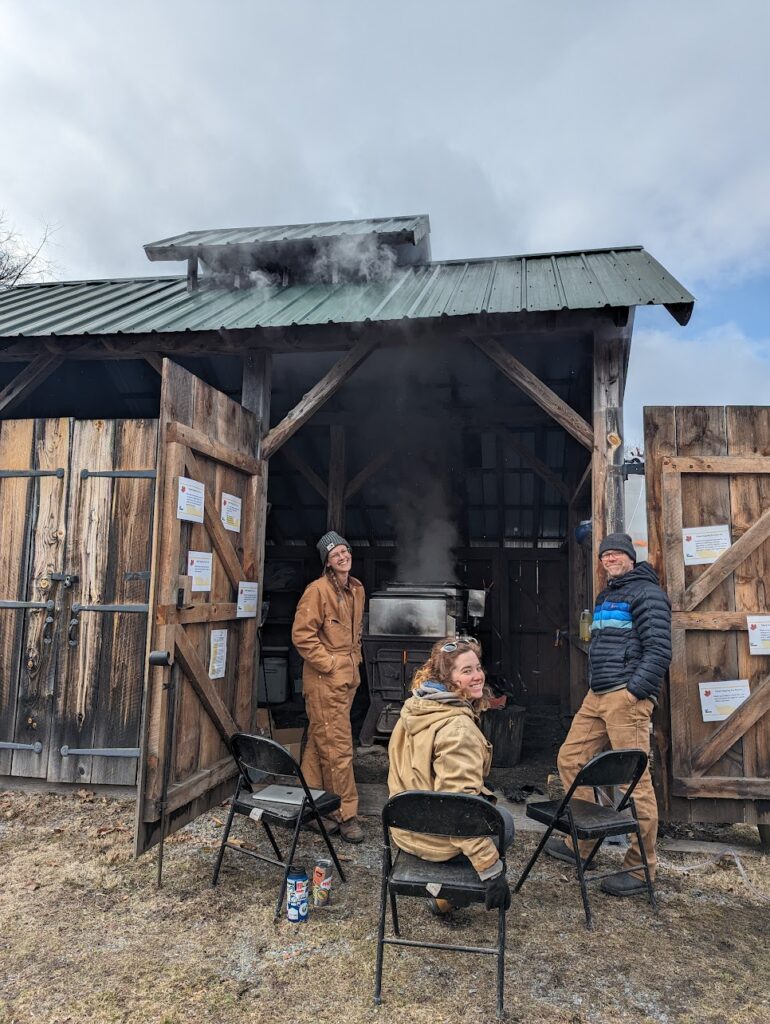
“Inside the tree, there are channels for sap to flow through what’s called the sapwood. The weather needs freezing temperatures at night and above freezing during the day to create a fluctuating pressure. That helps the tree take up water from its roots in the ground and then disperse it throughout its branches, allowing for many optimal areas to tap for sap flow,” says Mark Congdon—a.k.a. Farmer Mark.
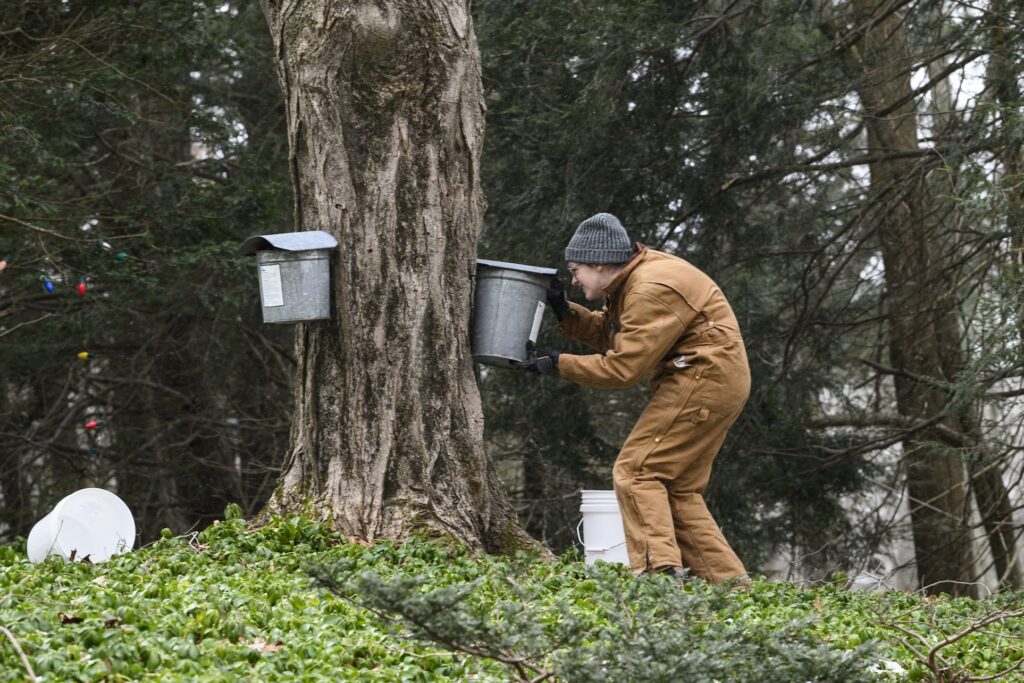
To get at the sap, our farmers who make maple syrup drill a hole into the tree and stick in a metal or plastic tap that allows the sap to flow out into a bucket. We’re immeasurably grateful that our neighbors allow us to collect sap from their trees. This year, we’re tapping just over 100 trees scattered across private properties around Concord, and we expect they’ll yield a little more than 30 gallons of golden syrup.
Maple syrup season runs from early February through March, depending on the weather. Throughout the season, our farmers set up buckets, check them every other day, bring the sap back to the farm, and boil it into syrup, which takes a full day. It takes about 40 gallons of sap to make 1 gallon of syrup.
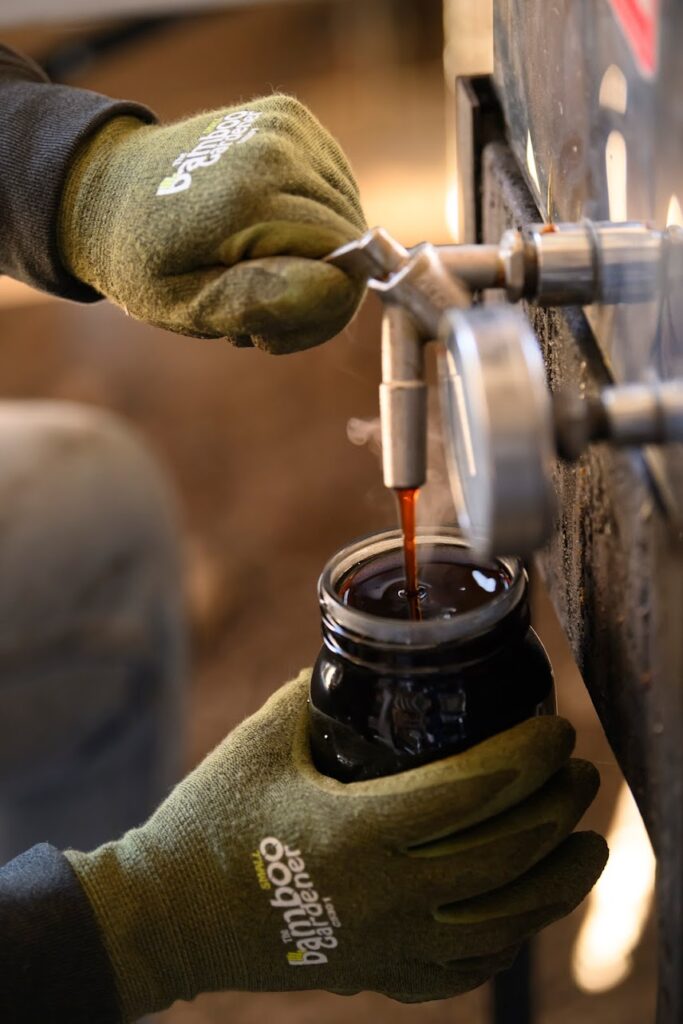
We continue to look for new maple trees to access. Over the years, we’ve used multiple strategies, from targeted emails to pounding the pavement with letters in hand to blog posts like this one. In years past, the Concord Public Library, which is about two miles from the farm, joined the program, representing the outer edge of our ideal two-to-three-mile radius. If you’re interested in seeing if your maple trees would be a fit for our program, reach out to office@gainingground.org.